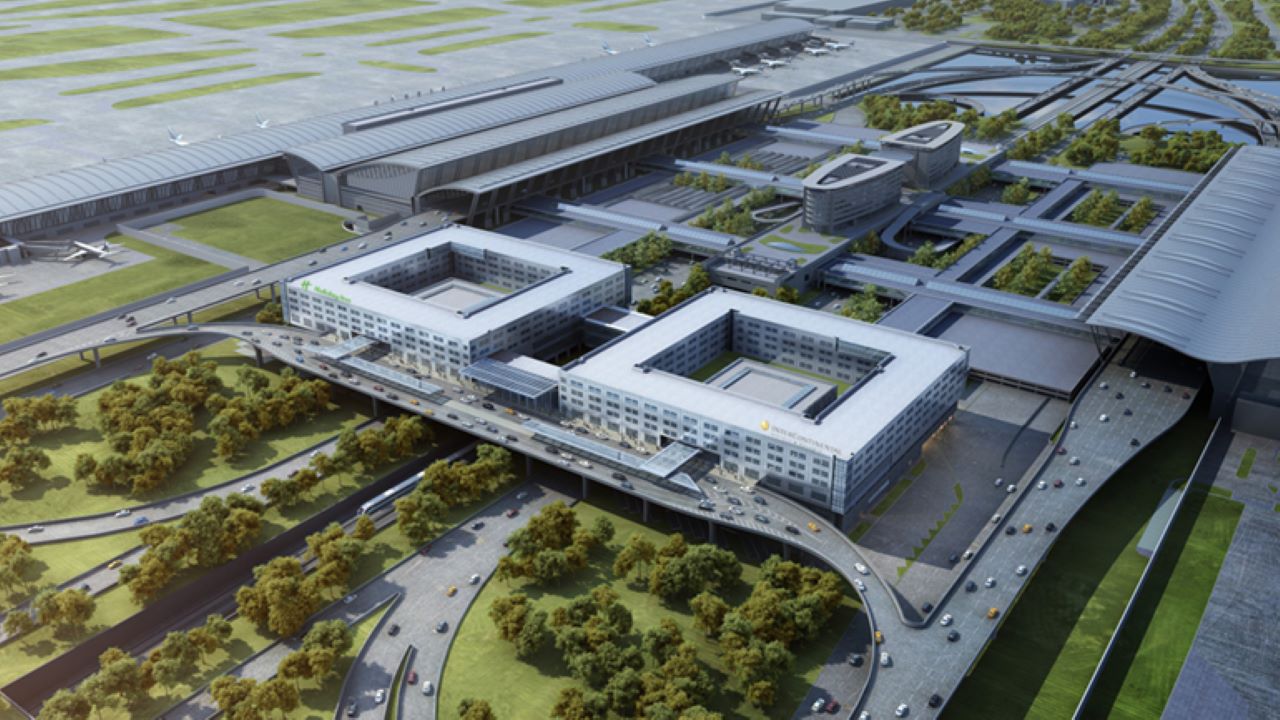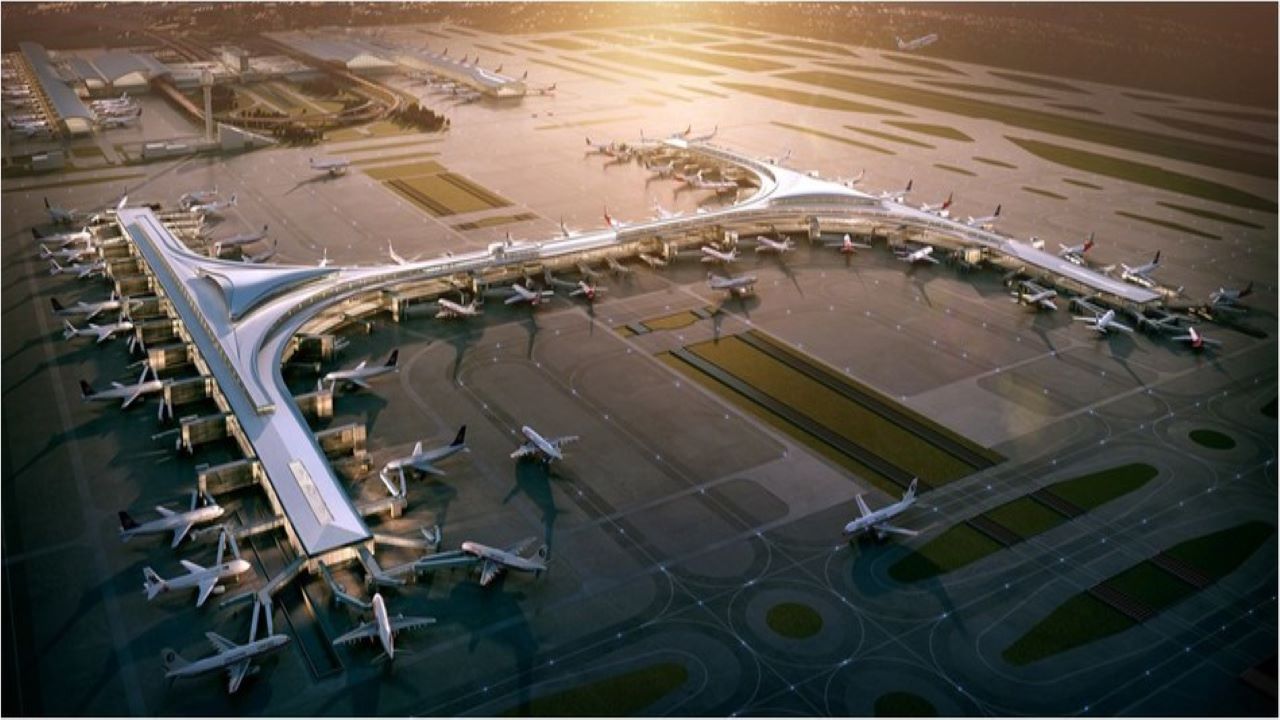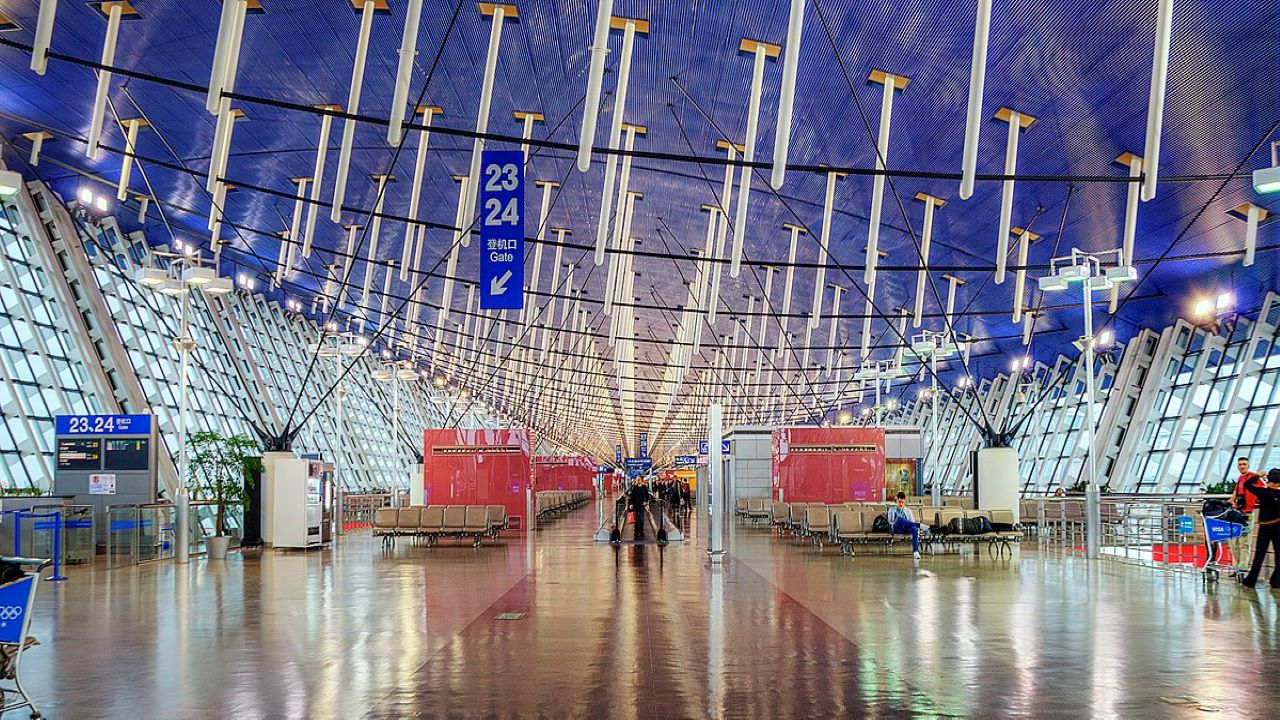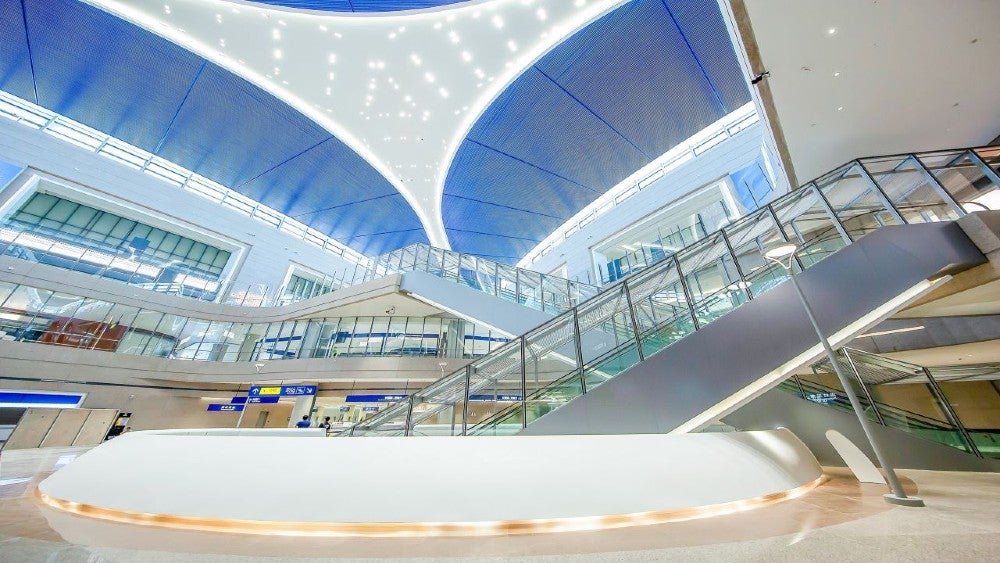Pudong International Airport (PVG) is 30km south-east of Shanghai, China, and covers an area of approximately 40km². The airport began operations in October 1999 and replaced Shanghai’s Hongqiao International Airport (SHA). It serves major airline operators and is the prime hub for China Eastern Airlines, Shanghai Airlines and Air China.
The international airport has a capacity to handle 80 million passengers, 555,000 flights and 2.88 million tonnes (Mt) of cargo a year. It comprises two main passenger terminals, three cargo areas and four parallel runways.
Construction was carried out in phases, with the recently announced phase three that involved a new satellite terminal that was completed in September 2019.
Terminals at Pudong International Airport
Terminal 1 (T1) at Pudong International Airport has a capacity of 20 million passengers and covers an area of 280,000m². It features 28 gates, 204 check-in counters and 13 luggage conveying belts. The terminal was designed to resemble Kansai International Airport’s (KIX) terminal with its exterior built to resemble waves.
Terminal 2 (T2) was constructed as part of phase two and opened in March 2008. It can handle an additional influx of 40 million passengers a year and 4.2Mt of cargo per annum. Designed in the shape of a seagull, T2 is larger than T1 and used by Air China, Shanghai Airlines and other Star Alliance members.
In December 2019, IHG® (InterContinental Hotels Group) announced its plan to open two hotels at the terminal complex of the airport in 2024.
Satellite terminal concourse at Pudong International Airport
The latest expansion at Pudong International Airport involved the construction of the world’s biggest satellite terminal concourse, as well as tarmacking of the T1 and T2 linking taxiway, 16 overnight parking spaces for planes and ten taxiway bridges. Work started on the new satellite terminal concourse on 29 December 2015.
The concourse was built with a CNY20.6bn ($3bn) investment and upon completion increased the airport’s capacity to 80 million passengers and 4.26Mt of cargo a year. With 90 boarding bridges and 120 new aprons, the satellite terminal has the capacity to manage the growing air traffic and serves as a hub of airline operations.
The H-shaped terminal comprises two sections, S1 and S2, covering a combined area of 622,000m². These two sections are connected to T1 and T2 through an underground subway.
The new satellite terminal can handle 80 million passengers in a year. Delta has relocated from T1 to the new satellite terminal (S1).
Facilities at the satellite terminal
The new satellite terminal serves as an extension of the existing two terminals and function as an integrated transit centre. It offers a multitude of services, including domestic and international transit, departure and arrival waiting lounge.
T1 and T2 are connected to the satellite terminal using a people mover system. S1 and T1 provide services to East Airlines and the SkyTeam Alliance and have a combined capacity of approximately 36.8m passengers.
S2 and T2 serve China Southern Airlines, Air China, the Star Alliance and other airlines and have a capacity of nearly 43.2 million passengers.
Other facilities at the satellite terminal include two underground tunnels, a luggage service, metro system, energy centre and near-gate parking system for 61 vehicles. Passengers arriving at the existing terminal can reach the new facility within a few minutes by taking the new subway train.
Green energy features such as natural ventilation, open lighting and rainwater storage are also part of the new terminal design.
Contractors involved
American architect Corgan was selected to design the new satellite terminal in association with their Chinese partner IPPR.
Otis Elevator was contracted to provide escalators and moving walkways for the new satellite terminal that has been built as a part of the Pudong International Airport expansion.











